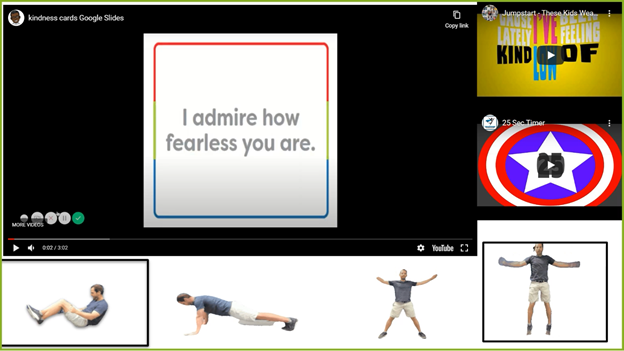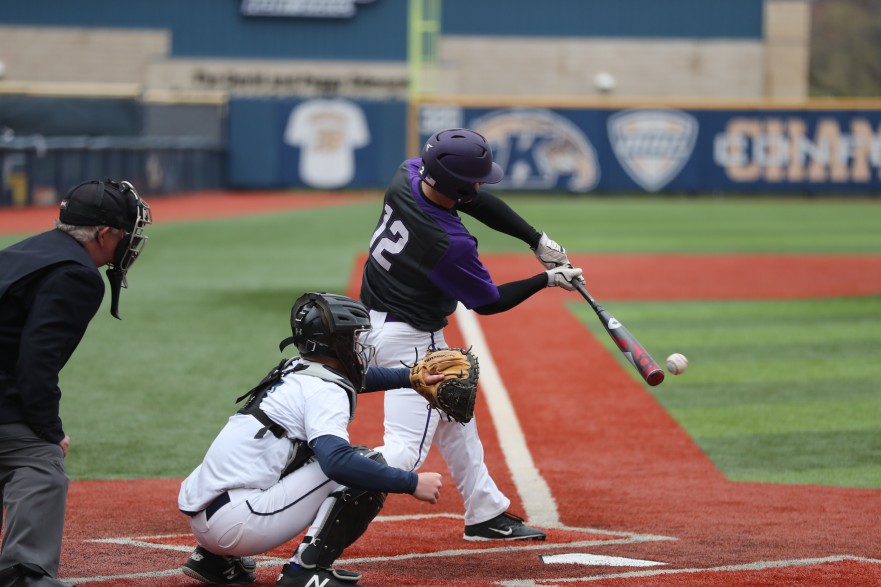From school administrators to teachers to students, we often hear the phrase “When things go back to normal.” I am a bit tired of hearing that, but not for the reason you may think. We all want to be back to “normal,” but the reality is that we aren’t there yet. There is no question education has had to make many adjustments to continue serving students over the last year. Let’s embrace the challenge we have in front of us. As a physical education teacher, helping students stay active is more important now than ever, but this curveball we call a pandemic may have taught us a few things. Through reflection, I am realizing there are some silver linings, which have ultimately helped improve my practice and student learning.
I am finding more success in not talking about going back to normal, but rather helping students discover how they can stay active and access resources now to support them, regardless of the situation they are in. I want them to recognize the resources available within their household, neighborhood, and community to engage in meaningful physical activity that they will enjoy. For this, it’s important to teach skills and concepts they are interested in, but also ones they can access beyond physical education. For example, our school has a hiking trail within walking distance. I decided to take a “field trip” to the hiking trail, where many students had not been before. Hiking is free and close to school, so it provides all students a way to be active beyond physical education.
There is also a park near our school, where students can go play basketball, soccer, and even skateboarding. Teaching students about the community and how to access resources to stay active can mean the difference between getting their recommended 60 minutes of activity a day and not. Students need to get outside and be active, especially nowadays with many schools being remote. The goal as educators is to transcend education. As a physical education teacher, I strive to motivate students to embrace lifetime health and wellness.
Not only are students struggling physically in large part because of the pandemic, but many are struggling socially and emotionally as well. In our program, we embed Social Emotional Learning into each lesson, whether it’s virtual or in-person. Because many students have been virtual most of the year, they have missed out on much-needed social interaction. They also might be feeling lonely or sad, with nobody to talk to about their feelings, much less how to cope with them. Physical education is a perfect opportunity for this. It even aligns with our standards and curriculum (cooperating with others and describing positive social interaction). We did  check-ins virtually using an emoji scale. Students then typed privately to me on why they felt that way, which allowed every student to feel valued and heard. Another example was when students randomly selected “Kindness Cards” (from SHAPE America’s Health Moves Minds program). Then, they performed an exercise for 25 seconds while they thought about the answer. They finished the round by typing in the chat so everyone could see and participate simultaneously. In this example, students discussed who they admired for being “fearless,” which is particularly important with distance learning as this is new to all of us. They not only made the person they complimented feel better, but they felt better themselves as well. In our class, we call that “Filling Buckets.”
check-ins virtually using an emoji scale. Students then typed privately to me on why they felt that way, which allowed every student to feel valued and heard. Another example was when students randomly selected “Kindness Cards” (from SHAPE America’s Health Moves Minds program). Then, they performed an exercise for 25 seconds while they thought about the answer. They finished the round by typing in the chat so everyone could see and participate simultaneously. In this example, students discussed who they admired for being “fearless,” which is particularly important with distance learning as this is new to all of us. They not only made the person they complimented feel better, but they felt better themselves as well. In our class, we call that “Filling Buckets.”
Another silver lining is that I plan on using the virtual lessons that I created for this year moving forward. Let’s say I am teaching scarves and hand-eye coordination in person next year. I can then post my previously used virtual lesson using plastic grocery bags (essentially the same as scarves), allowing the students who are absent to engage. Think about a regular year and how often students are absent for various reasons, usually beyond their control (parents plan a family vacation, they don’t have a ride to school, or they have a doctor appointment). Since I am providing these lessons online, with “equipment” they all have at home, we are creating equitable learning opportunities for those students who aren’t able to be in school that day. I have taught them how to adapt equipment and use what they have in their home to meet the objectives. Another benefit is that by posting at-home lessons and challenges on my website, I’m creating opportunities for students (even those that are in-person) to apply and expand on their skills beyond class. Since we have created equipment at home, they now have access to much more activities available to them than they ever thought before.
Teaching during the pandemic has been challenging to say the least. Instead of waiting for “things to get back to normal,” work to create meaningful, memorable experiences for your students RIGHT NOW. Will the curveball look different than the fastball we are used to? Yes. As I have said before, our what and how may have changed this year, our WHY remains the same. As a hitter, let’s do our best to be prepared for that curveball, and slam it out of the park. Students deserve our best. By being positive and having a growth mindset, our best is possible, even during a pandemic.










Comments 2
Exactly, a principle of mindfulness is, “You have only one moment to live – the moment you’re in.” I’m plenty guilty of saying, “When we get back to normal.” But the best days are when something happens in a virtual class that might never happen in an in person lesson. Also, there a some students I’m as close to as I’ve ever been. One of my favorite things is when a family decide for their kid to return to in person classes and I meet them face to face for the first time. It’s always, “I know you, but I know now I didn’t really know you,” which is very cool.
Author
Absolutely! Thanks for checking it out and responding, Sandy!